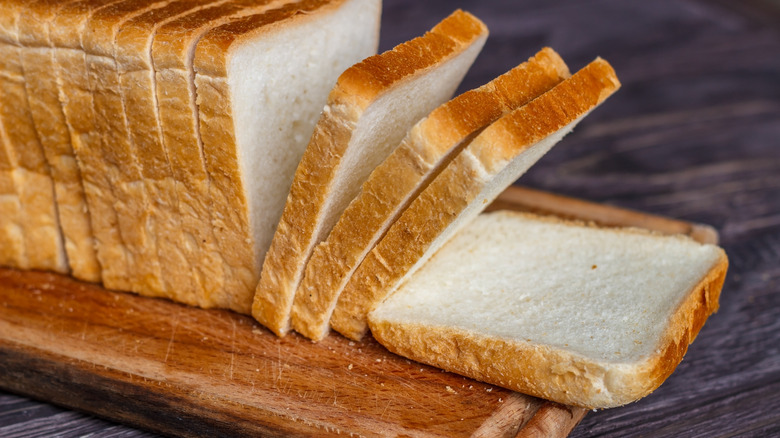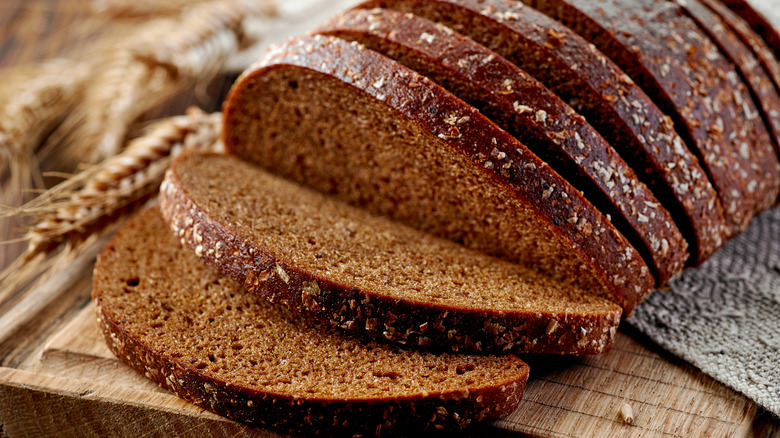The Science Behind Why Store-Bought Bread Lasts Longer
On the surface, bread may seem like one of the simplest staple foods, essentially made from just a few ingredients such as flour, yeast, salt, and water. But there is a big difference between a loaf you might bake at home or pick up from an artisan baker and the prepackaged, ready-sliced variety you commonly find in the store. One of the key variations is how long each type of bread will last before starting to go stale or becoming moldy.
A freshly-baked baguette can start to harden after just a day, whereas a pillowy soft loaf from the supermarket can last around a week or even longer, depending on how it's stored. So why does store-bought bread have such a long shelf-life? The answer lies in the ingredients it contains, with additives and preservatives often incorporated into manufactured bread on an industrial scale, in an attempt to extend its freshness.
Bread usually deteriorates thanks to air, whether that's because of exposure to it or lack of it. When left out and in direct contact with air, a loaf can become dry and hard; but, on the other hand, humidity and lack of airflow can cause mold to grow. Correct storage can help (it's why you shouldn't even think about storing fresh bread in plastic, and instead opt for a paper bag), but commercially-produced bread often also contains a host of extra ingredients that can help delay deterioration, from enzymes and emulsifiers to antimicrobials.
How chemicals extend the life of store-bought bread
If you've ever looked at the list of ingredients on a store-bought loaf of bread and thought that it reads more like a chemistry textbook than a recipe, you're not alone. While manufactured bread features several nutrients that are recognizable, including vitamins and minerals like folic acid and calcium (both started to be added to loaves in the 1940s to help counteract malnutrition), there are also some items that you might struggle to pronounce, let alone define. And their primary purpose is to stop store-bought bread from becoming hard or moldy too quickly.
Emulsifiers are used in the bread-making process to add extra softness to the texture of the loaf, and to prevent bread from going stale too quickly. Scientific-sounding examples might include mono- and diglycerides, sodium stearoyl-2-lactylate (SSL), calcium stearoyl-2-lactylate (CSL), or DATEM: Diacetyl Tartaric Acid Ester of Mono and Diglycerides.
Enzymes also help bread stay softer for a greater length of time. You might spot them in the ingredients list as protease, carbohydrase, or oxidase, among other terms. Antimicrobials such as calcium propionate, sodium benzoate, or potassium sorbate, meanwhile, help to inhibit the growth of mold on the loaf, which also helps to give store-bought bread its long shelf-life.
Some store-bought breads naturally last longer than others
Not all scientific-sounding ingredients in store-bought bread are as artificial as they might initially appear. For example, ascorbic acid sounds technical but is another name for vitamin C. But if you'd rather avoid additives, you can buy breads at the store or bakery that don't contain a heap of chemicals, though the disadvantage is that they can spoil faster as well as come with a larger price tag. There are, however, some exceptions, as some bread types naturally contain ingredients that help them last a few extra days.
Real sourdough bread should just contain flour, water, and salt; thanks to the lactic acid bacteria created by the fermented sourdough starter, it naturally lasts longer than some other types of store-bought breads. The bacteria stops it going stale so fast, and the acidic nature stops mold developing rapidly, with no extra chemicals required.
Other types of store-bought bread, such as rye loaves, also tend to have a longer shelf-life thanks to the rye flour used. Packaged rye can last up to a week at room temperature if stored well. In many ways, rye's dense, chewy texture and rich dark color make it the antithesis of the light, fluffy, white loaves in supermarkets but they do share a similar shelf-life (one is just more naturally produced).



